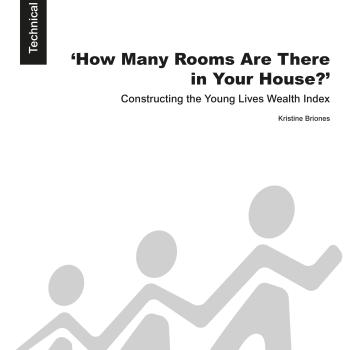Publication Information

The Young Lives wealth index is intended to be the primary measure of socio-economic status of households within the Young Lives sample. This technical note outlines the construction of the wealth index. The construction draws on work undertaken by the World Bank and Macro International used to develop the wealth index cited in the UNICEF Multiple Indicator Cluster Surveys (MICS). The wealth index positions Young Lives households on a continuous scale of wealth, with higher values reflecting higher household wealth. It was introduced in the Young Lives Round 1 (2002) country reports to determine household poverty status.
The Young Lives wealth index has allowed researchers to investigate the impact of material well-being on child health and education outcomes, among others. It has also been used to investigate the representativeness of the Young Lives sample in each of the four survey countries. A comparison of wealth indices between the Young Lives sample and nationally representative data reveals that Young Lives households are slightly wealthier than average households in Ethiopia, Andhra Pradesh in India, and Peru, while Young Lives households are slightly poorer than average households in Vietnam.

The Young Lives wealth index is intended to be the primary measure of socio-economic status of households within the Young Lives sample. This technical note outlines the construction of the wealth index. The construction draws on work undertaken by the World Bank and Macro International used to develop the wealth index cited in the UNICEF Multiple Indicator Cluster Surveys (MICS). The wealth index positions Young Lives households on a continuous scale of wealth, with higher values reflecting higher household wealth. It was introduced in the Young Lives Round 1 (2002) country reports to determine household poverty status.
The Young Lives wealth index has allowed researchers to investigate the impact of material well-being on child health and education outcomes, among others. It has also been used to investigate the representativeness of the Young Lives sample in each of the four survey countries. A comparison of wealth indices between the Young Lives sample and nationally representative data reveals that Young Lives households are slightly wealthier than average households in Ethiopia, Andhra Pradesh in India, and Peru, while Young Lives households are slightly poorer than average households in Vietnam.

